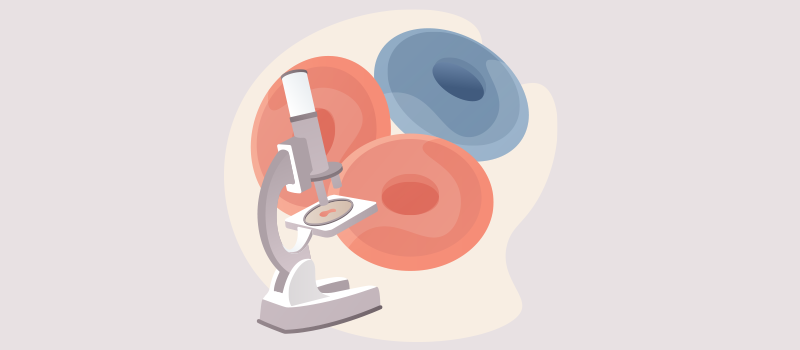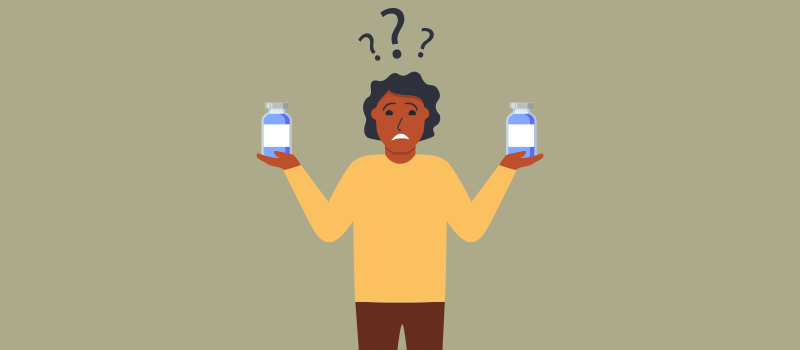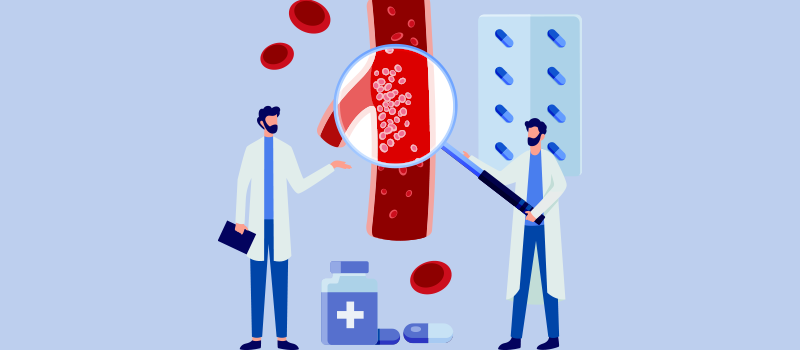What’s the Buzz
The Bee Healthy Blog
Medications to Treat Anemia

Blood is made up of four main components: a straw-colored fluid called plasma, red blood cells, white blood cells, and platelets. Anemia, also known as “lack of blood” or “low hemoglobin,” is a condition where there aren’t enough healthy red blood cells in circulation. Red blood cells contain iron and hemoglobin, a protein that helps deliver oxygen to all body organs through the bloodstream. Therefore, people who have anemia can experience symptoms like tiredness and weakness due to not enough oxygen reaching various organs in the body.
There are many types of anemia with different causes. The condition can range from mild to severe and can be temporary or long-lasting. Often, there is more than one cause for anemia.
The treatment for anemia depends on the type, cause, and severity. However, the end goal of the treatment is to raise the amount of oxygen that the red blood cells can carry to your body’s organs. This can be done by either increasing the levels of red blood cells, hemoglobin, or both in many cases.
The treatment approach can include eating a healthy, balanced diet, taking supplements or medicine, undergoing blood transfusions, or even surgical interventions depending on the cause of anemia.
Please continue reading to learn more about some of the drugs used to treat anemia.
What are the different types of anemia? How is anemia treated?
Iron Deficiency Anemia
This is one of the most common types of anemia. It occurs because of an iron deficiency. The body needs iron to make hemoglobin — the protein in red blood cells that enables them to carry oxygen. Therefore, the blood does not have enough healthy red blood cells in people with iron deficiency. As a result, patients with iron deficiency anemia often feel tired, weak, short of breath with pale skin, brittle nails, and poor appetite. The cause of iron deficiency can be a lack of iron in the diet, problems with iron absorption, or blood loss such as heavy menstrual bleeding. Any bleeding other than from menstruation needs to be identified and stopped as surgery may be necessary in severe cases.
You can treat iron deficiency anemia by eating a diet containing iron-rich foods or taking iron supplements. Some people may require intravenous iron replacement.
Vitamin Deficiency Anemia
The body needs vitamin B12 and folate to make healthy red blood cells. In people with a deficiency of these vitamins, the body makes red blood cells that are too large and can’t carry oxygen properly (megaloblastic anemia). It can occur due to dietary deficiencies or problems with the absorption of these vitamins.
This type of anemia is treated by replenishing whichever vitamin is lacking. Treatment consists of consuming diets rich in these vitamins or taking dietary supplements (vitamin supplements) by mouth or injection. In people who have difficulty absorbing vitamin B12 from food, vitamin B12 injections or nasal spray may be necessary. Sometimes this treatment is needed lifelong.
Anemia of Chronic Disease
There can be changes in the red blood cells and their oxygen-carrying capacity in people with chronic diseases such as chronic kidney disease. There is no specific treatment for anemia of chronic disease. The goal is to treat the underlying condition. However, if the anemia symptoms are severe, doctors may recommend a blood transfusion or erythropoietin injections (this is a hormone produced by the kidneys that can stimulate red blood cell production in the bone marrow). For example, in people who develop anemia following chemotherapy, a synthetic form of erythropoietin called epoetin alpha (Procrit, Epogen) or darbepoetin alfa (Aranesp) is sometimes used.
Hemolytic Anemia
Hemolytic anemia occurs due to the increased destruction of healthy red blood cells. This type of anemia can be inherited or acquired, and its treatment focuses on the underlying cause. Inherited or genetic conditions are those you are born with, such as sickle cell anemia and thalassemia. If the cause is an environmental toxin or chemical, stopping exposure to this agent is the mainstay of treatment. Damaging substances in the blood can be removed with a treatment called plasmapheresis.
In addition to genetic conditions such as sickle cell disease or thalassemia, hemolytic anemia can also occur in people with defective heart valves, tumors, or abnormal blood vessels. Along with folic acid supplements and other disease-specific medicines, treating these conditions sometimes requires surgery and blood transfusions in severe cases.
Steroids and other drugs that suppress the immune system may be used to treat hemolytic anemia due to the body’s immune system attacking its own red blood cells; this is called autoimmune hemolytic anemia.
For autoimmune hemolytic anemia and some types of inherited blood disorders, splenectomy (surgical removal of the spleen) may be recommended in some patients. The spleen, located under your rib cage, destroys old and damaged blood cells. Splenectomy removes the major site of red blood cell destruction; thus, decreasing anemia. Most people typically do not need a spleen to lead a normal, healthy life.
Sometimes, hemolytic anemia leads to kidney damage, and dialysis may be required. In very severe cases, a bone marrow transplantation is necessary to treat certain types of hemolytic anemia.
Sickle Cell Anemia
This inherited blood disorder is part of a wider group of conditions called sickle cell disease. Instead of the typical round shape, the red blood cells are sickle-shaped (crescent moon-shaped) in people with this disorder. These red blood cells are sticky and rigid and get stuck in blood vessels, stopping the smooth flow of blood. Sickle cell anemia is a type of hemolytic anemia because the abnormal blood cells don’t survive for long. This means there aren’t enough healthy normal-shaped red blood cells to carry oxygen to the organs in the body.
Sickle cell anemia cannot be cured, but treatments such as oxygen therapy, pain relievers, along oral and intravenous fluids can help to ease symptoms and prevent complications. Doctors also prescribe folic acid supplements, blood transfusions, and antibiotics for these patients. A medication called hydroxyurea (Hydrea, Droxia, Siklos), a cancer drug, is also used to treat some patients with sickle cell anemia.
Thalassemia
This is an inherited disorder in which the blood has a lower-than-normal hemoglobin level. Most types of thalassemia are mild and do not require any treatment. However, people with the more severe forms of this condition need regular blood transfusions and other treatments, including medicine, folic acid supplements, removal of the spleen, or a blood and bone marrow stem cell transplant.
Aplastic Anemia
This is a rare and serious type of anemia in which the body does not make enough new blood cells. Aplastic anemia can be mild or severe. It can occur at any age and develop suddenly or slowly over time.
Treatments for aplastic anemia include medications, blood transfusions, or bone marrow transplants (stem cell transplants).
Wrap Up
There are several effective anemia therapies available, including medications. The important thing is to seek medical care if you notice signs and symptoms such as weakness, fatigue, dizziness, shortness of breath, fast heart rate, pale skin, brittle nails, chest pain, headaches, and cold hands or feet. Talk to your doctor or pharmacist if you have questions about healthy, balanced diets. If you’re concerned about not getting enough nutrients from your diet, talk to your doctor about taking a multivitamin or dietary supplement to prevent iron deficiency or vitamin deficiency anemia.
References:











SOCIAL